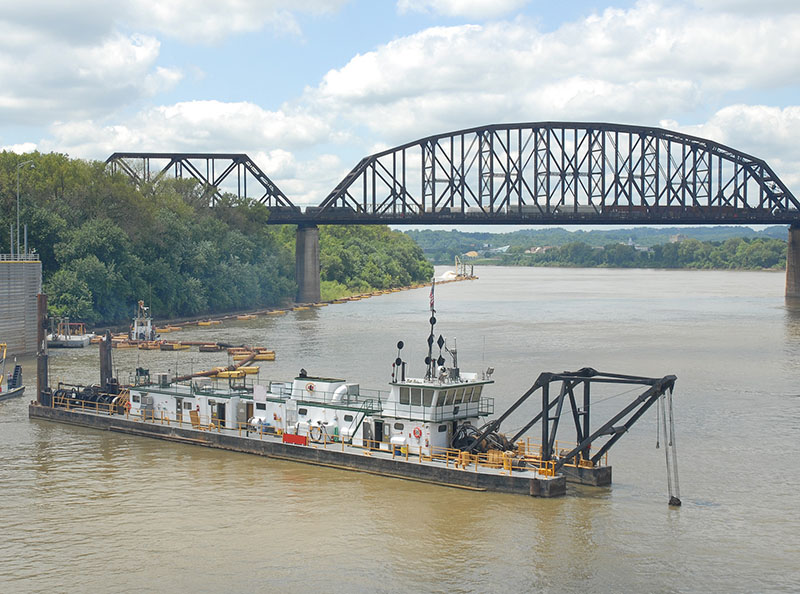The condition of the U.S. inland waterways system has improved over the last four years. The American Society of Civil Engineers (ASCE) has released its new report card on U.S. infrastructure, and it gives waterways a slightly improved grade. In most schools, however, receiving a D would land you in the principal’s office — and most likely detention. But the principal would have to acknowledge some improvement: The inland waterways rated a D- in ASCEs 2013 report card.
The report said the waterways deserve a slightly better grade this time around because there has been increased investment in inland waterways infrastructure in recent years, but these upgrades still take far too long to complete.
Other transportation modes didn’t score much better. Bridges got a C+; Ports, C+; Dams, D; Railroads, B; Roads, D- and Levees, D. The overall grade given to all 16 categories of U.S. infrastructure studied by the engineers was a D+.
The report card estimated that over the next 10 years, there will be a funding gap among all infrastructure categories of $2 trillion. It comes at an important moment in Washington, where Congress will be looking at ways to meet President Trump’s promise of a $1 trillion public-private infrastructure package. The report also noted that most of the nation’s locks and dams are well beyond their 50-year life spans, adding that “nearly half the vessels using the system experience delays.”
The U.S. Army Corps of Engineers, which oversees and maintains the inland waterways, estimates that $4.9 billion is needed over the next 20 years. The report said that recent increases in investment and project prioritization have lead to improvements in projected completion dates of many rehabilitation projects. It notes that projects once projected to be done by 2090 are now on track for completion in 2038. “However, for this progress to come to fruition, and the trend to improve, funding must continue at a higher and more consistent level, given the large backlog of needs,” the report said.
The engineers recommend giving the Corps contract authority for projects to avoid stop and start of construction that is now happening because of the appropriations process. They also recommend funding waterways projects at authorized levels and doing so consistently, fully using the Inland Waterways Trust Fund and increasing the amounts spent on operations and maintenance of the system, using more public-private partnerships as alternative financing, and developing standardized measurements for vessel delays.
The soybean industry, a major user of inland barge transportation to move their product to market, agrees that more funding certainty for waterways investment is essential to a smooth running inland system.
“It is essential for federal, state and local governments to provide greater predictability and reliability of that funding. This is a topic that receives less attention,” said Mike Steenhoek, executive director of the Soy Transportation Coalition in Iowa. “ It is much more effective when government can provide greater certainty of funding over a number of years rather than a surge of funding in one year and scarcity the next. Because we do not provide this certainty especially — with regards to our lock and dam inventory — cost escalations and project delays become commonplace.”
Meanwhile, the Trump administration’s fiscal 2018 federal budget proposal would cut $1 billion from the Corps of Engineers’ current $5 billion budget. This would be a 16% reduction. Previous administrations have also proposed deep cuts in the agency’s budget, but Congress has not gone along.




